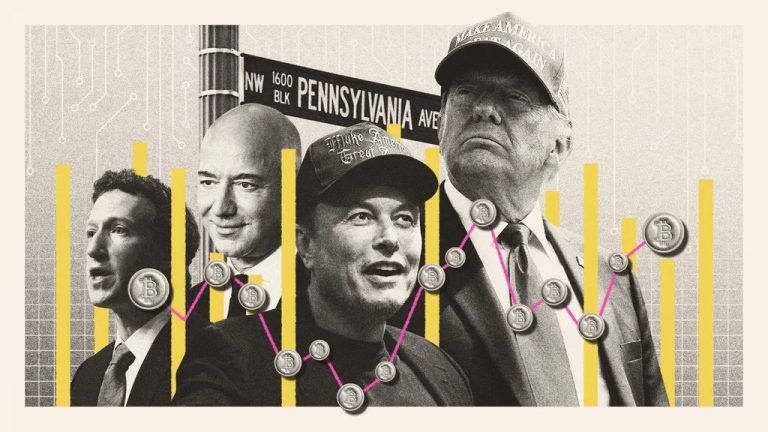
President Donald Trump recently claimed that $9 trillion in investments is headed to the U.S., dismissing concerns about a potential recession. This statement, reported across various platforms, reflects his confidence in the U.S. economy’s resilience despite ongoing economic uncertainties.
Trump’s assertion aligns with his administration’s narrative of attracting significant private-sector and foreign investments. For instance, earlier reports indicated that his policies had spurred commitments of $3 trillion to $7 trillion in investments, with companies like Eli Lilly, Johnson & Johnson, Toyota, and Hyundai announcing multi-billion-dollar projects in the U.S.
The $9 trillion figure was highlighted during an “Investing in America” event at the White House, where Trump showcased pledges from major corporations. However, economic data has not yet shown a corresponding increase in factory construction spending to substantiate these commitments.
Register for Tekedia Mini-MBA edition 19 (Feb 9 – May 2, 2026): big discounts for early bird.
Tekedia AI in Business Masterclass opens registrations.
Join Tekedia Capital Syndicate and co-invest in great global startups.
Register for Tekedia AI Lab: From Technical Design to Deployment (next edition begins Jan 24 2026).
Trump’s dismissal of recession fears contrasts with market volatility and economic indicators. He has described the economy as undergoing a “period of transition,” attributing any downturn to the previous administration’s policies rather than his own, such as tariffs. Recent data from the Department of Commerce indicated that the U.S. economy shrank at an annual rate of 0.3% in Q1 2025, the first contraction in three years. This was attributed to reduced government spending and surging imports as firms stockpiled goods ahead of tariffs.
The S&P 500 has experienced significant declines, losing $4 trillion to $6 trillion in value since its February 19, 2025, peak, driven by fears of Trump’s tariff policies triggering a trade war. The Nasdaq also saw a 4% drop on March 10, 2025, its worst single-day decline since September 2022. Analysts have raised concerns about a potential “Trumpcession.” Goldman Sachs increased its recession probability from 15% to 20% in March 2025, citing policy uncertainty, particularly around tariffs.
Consumer confidence dropped sharply in February 2025, with the Conference Board’s measure falling below the recession threshold. Trump’s tariffs, including 25% levies on Canada, Mexico, and China, and up to 125% on Chinese goods, have fueled inflation fears and disrupted global trade. These policies have led to retaliatory tariffs from trading partners, increasing costs for U.S. businesses and consumers.
Analyst and Investor Perspectives
Some investors initially welcomed Trump’s pro-growth agenda of tax cuts and deregulation, but uncertainty over tariffs and federal workforce cuts has dampened sentiment. Analysts note that businesses struggle to plan investments due to the unpredictable tariff timeline. Commerce Secretary Howard Lutnick has claimed there is “no chance” of a recession, while Treasury Secretary Scott Bessent acknowledged a “natural adjustment” period. These mixed messages have added to market unease.
While Trump touts trillions in pledged investments, critics argue there’s no concrete evidence of immediate economic impact. The lack of increased factory construction spending suggests these commitments may be long-term or speculative. There’s mix of enthusiasm and skepticism about Trump’s $9 trillion claim. Supporters view it as evidence of economic strength, while others question its feasibility amid market turmoil and recession risks. These posts, while not factual evidence, highlight polarized sentiment.
The $9 trillion figure is ambitious and unprecedented, dwarfing previous investment pledges under Trump’s first term or the Biden administration. Without detailed breakdowns or timelines, it’s difficult to verify. Historical data shows that announced investments often face delays or fail to materialize fully. Trump’s dismissal of recession concerns overlooks warning signs like GDP contraction, declining consumer confidence, and rising unemployment claims.
Tariffs, while intended to boost domestic manufacturing, risk inflating prices and stifling growth, as evidenced by retailer warnings and economic forecasts. Trump’s simultaneous push for lower interest rates, higher tariffs, and deregulation creates conflicting economic pressures. For example, tariffs may drive inflation, limiting the Federal Reserve’s ability to cut rates, which could hinder investment and growth.
Trump’s claim of $9 trillion in incoming investments is a bold assertion aimed at projecting economic confidence, but it lacks immediate corroboration in economic data. While his administration has secured significant investment pledges, the broader economic picture—marked by GDP contraction, market sell-offs, and tariff-induced uncertainty—suggests heightened recession risks.
Investors and analysts remain divided, with some optimistic about long-term growth and others alarmed by short-term volatility. The true impact of these investments and Trump’s policies will depend on their implementation and global economic responses.



